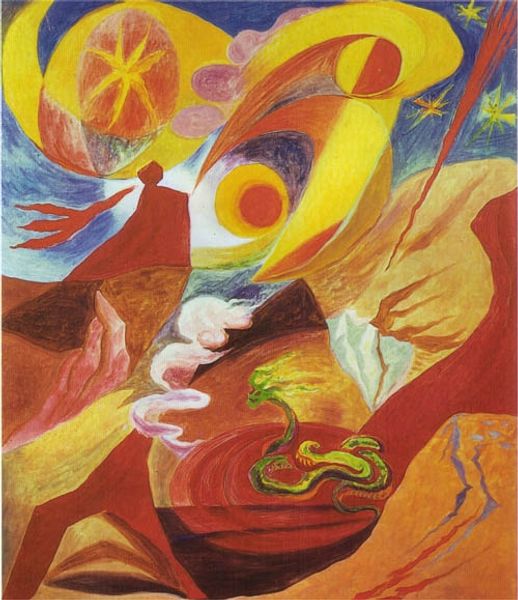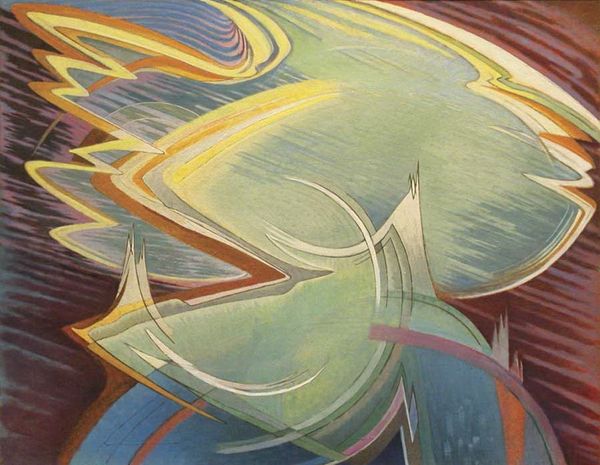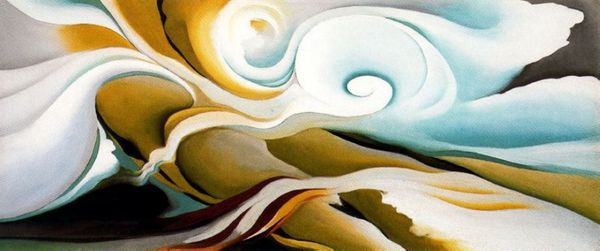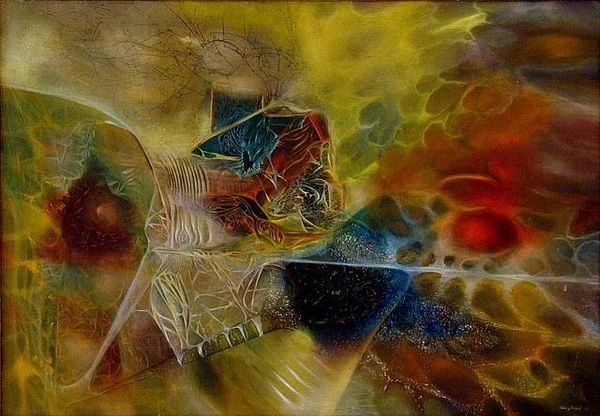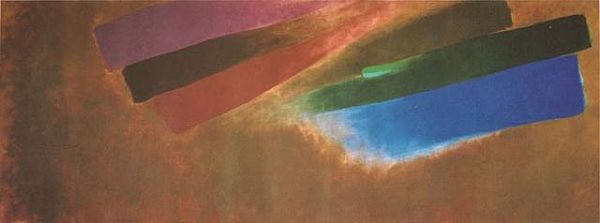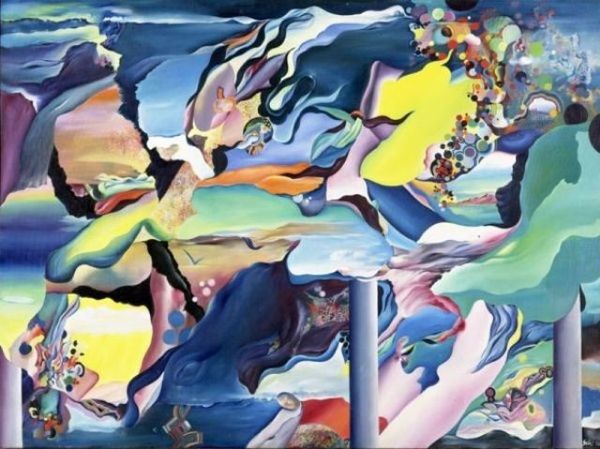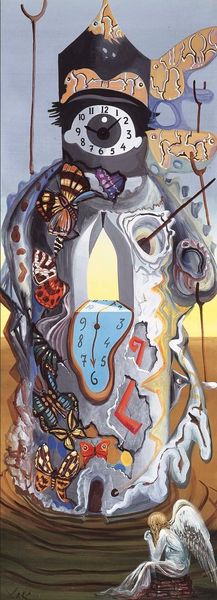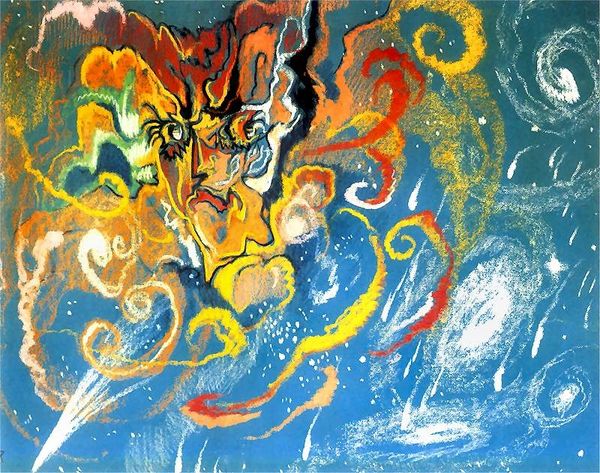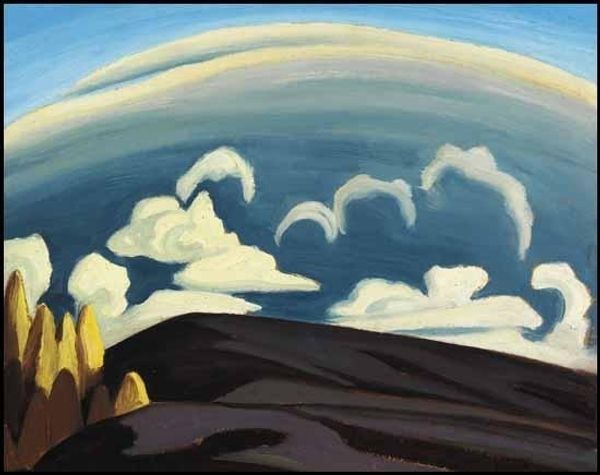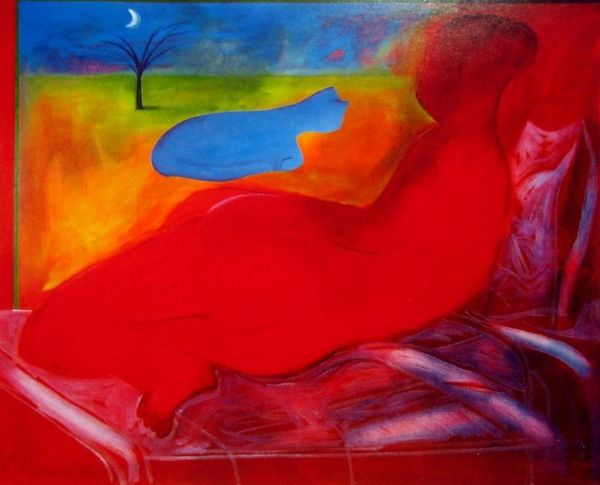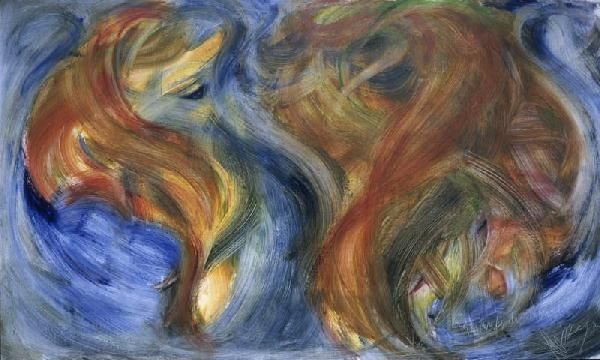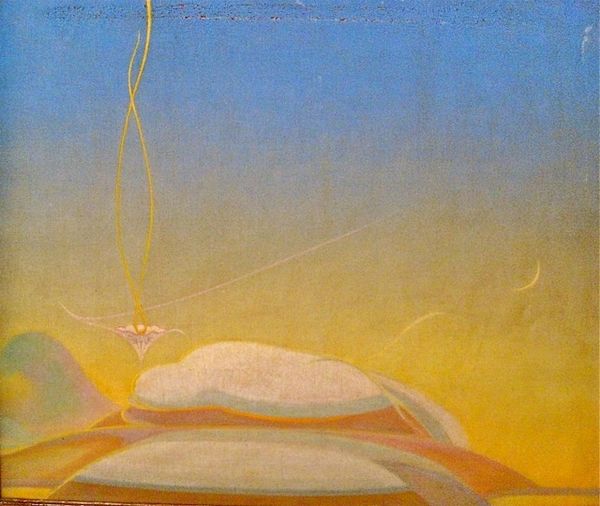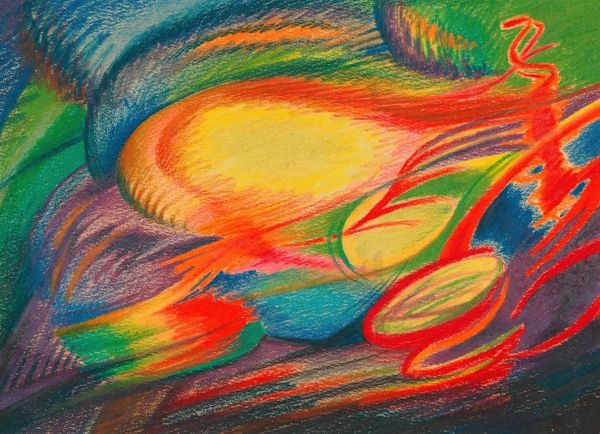
painting
#
abstract-expressionism
#
abstract expressionism
#
organic
#
painting
#
landscape
#
form
#
abstraction
Copyright: Lawren Harris,Fair Use
Curator: Lawren Harris's "LSH 134," completed in 1950, presents a compelling example of abstract expressionism. What are your immediate impressions of this painting? Editor: Well, the layering of colors and swirling forms evokes a kind of controlled chaos. I see yellows bleeding into blues and oranges, with everything delineated by these strong contour lines... a strange mix of hard edges and flowing movement. Curator: Indeed. Let's consider the materials and the context in which Harris was working. At this point in his career, Harris had moved away from more representational landscapes. This turn reflects an increasing focus on abstraction that resonated with international artistic trends following World War II. Think of the shift towards non-objective painting and consider his embrace of new pigments and canvas types readily available at the time. Editor: It's interesting to think about Harris, so connected to the Group of Seven, now embracing a completely different formal approach. Notice how he creates depth not through traditional perspective, but through overlapping shapes and a restricted tonal range. Curator: The simplification of form directs us to explore the symbolism embedded within those very structures. Does the composition remind you of a landscape broken apart by larger forces? Are we perhaps witnessing Harris engage with the social fractures of the period? Editor: I'm intrigued by those outlines. They almost create the effect of stained glass, dividing light and color within each shape. In the upper area, I am attracted to those muted colors, their transparency seems to evoke a spiritual transcendence or etheral form. Curator: That attention to light reflects his earlier works as well. I am interested to imagine Harris working in his studio, perhaps thinking of mass production while developing these new abstractions, reflecting our shifting relationships to landscapes amid evolving global and industrial systems. Editor: It certainly pulls one in, and looking at it now, I think I better appreciate how Harris found his way into this type of work. Curator: Considering the artist's background, this work offers an interesting perspective on material choices and creative expression in a transformative time.
Comments
No comments
Be the first to comment and join the conversation on the ultimate creative platform.
